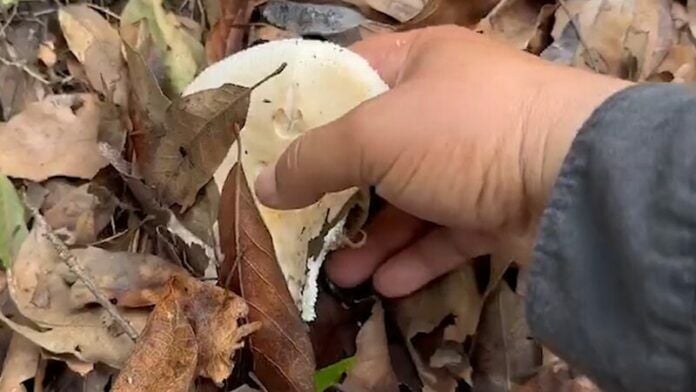Man dies from mushroom poisoning in Loei province

A 45 year old man from Talad Khang subdistrict, Phu Ruea district, became the first fatality of the year due to consuming poisonous mushrooms. He collected five mushrooms on May 28 and grilled them for consumption. Subsequently, he fell ill and was admitted to Phu Ruea Hospital before being transferred to Loei Hospital, where he died on June 3 at 7.30 pm.
Last year, residents of Ban Khaw, Kok Sathon subdistrict, Dansai district, Loei province, also suffered from mushroom poisoning. They collected mushrooms near Phu Lom Lo, cooked them, and subsequently experienced severe symptoms, including abdominal pain, nausea, and vomiting. Nine individuals were hospitalised, and one succumbed to acute liver and kidney failure at Loei Hospital.
Dr Rassamikhae Chongtham, an internist at Loei Hospital, stated that the current weather conditions are conducive to the growth of wild mushrooms, which are highly sought after by locals. However, she warned that foraging for wild mushrooms during the rainy season could be dangerous due to the risk of consuming toxic varieties that resemble edible mushrooms.
The number of patients seeking treatment for mushroom poisoning in Loei province has been rising daily, with nine cases reported from surrounding districts, and the number is expected to increase, Dr Rassamikhae said.
“We urge the public to thoroughly inspect mushrooms before collecting them. Various types of poisonous mushrooms exist in Thailand, categorised into three main groups.”
The first group causes hepatitis, such as the Ra-Ngok Hin mushroom. Symptoms do not appear immediately but begin four to six hours after consumption. Initial signs include nausea, vomiting, and diarrhoea. In some cases, symptoms may appear more than 10 hours later or even the following day. Two to three days after symptoms onset, liver function deteriorates, liver enzymes rise, and hepatitis develops. Severe cases can lead to liver failure and death.
Poisonous mushroom
The second group affects muscles, including the Leuang Nok Kamin mushroom and Than mushroom. Early symptoms, such as nausea, vomiting, and diarrhoea, appear within six hours of consumption. Muscle pain follows, along with dark or cola-coloured urine due to muscle waste products leaking into the urine.
In severe cases, high levels of potassium can lead to cardiac arrhythmias and death. Myoglobin from muscle damage can also cause kidney failure.
The third group disrupts the gastrointestinal system, including the Daeng Nam Mak mushroom and Hua Kruat Krib Kiao mushroom. These cause gastrointestinal issues like nausea, vomiting, and diarrhoea within six hours of consumption. While toxins from these mushrooms do not affect other organs, severe cases can lead to dehydration, shock, and death, akin to severe food poisoning.
Dr Rassamikhae emphasised that if symptoms such as nausea, vomiting, and diarrhoea develop more than six hours after consuming mushrooms not bought from a reliable source, it could indicate possible hepatitis. Immediate medical attention is crucial.
If symptoms appear within six hours, self-treatment for food poisoning may be attempted. However, if severe symptoms occur, such as an inability to eat or drink, dark or cola-coloured urine, excessive diarrhoea, extreme fatigue, or muscle pain, seeking medical help is essential, reported Sanook.
For initial treatment of suspected mushroom poisoning, if the specific type or toxin cannot be identified, inducing vomiting by gagging or consuming egg whites can help. Promptly transporting the patient to a hospital for treatment is critical.
Latest Thailand News
Follow The Thaiger on Google News:


























